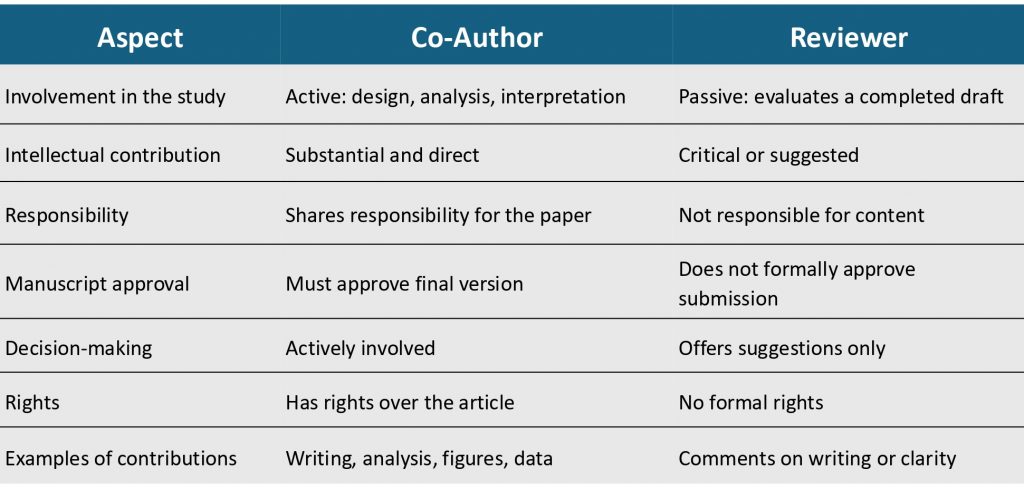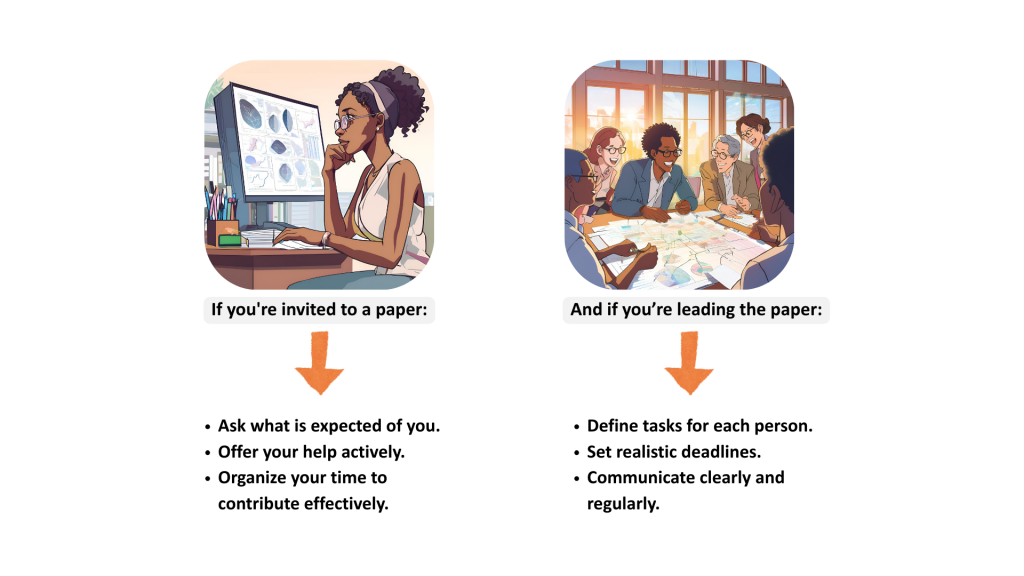Co-authorship in academia can be complex. Often, when we’re invited to co-author a paper, we’re not entirely sure what’s expected of us. From my own experience, I’ve made mistakes both as a co-author and as someone coordinating others’ contributions. Fortunately, I’ve had generous colleagues who have guided and helped me learn. This guide results from that shared learning and aims to offer a foundation for co-authoring with clarity, commitment, and respect.
A Co-Author is Not a Reviewer
Knowing the Difference: Contribution vs. Commentary
A common misunderstanding in academia is equating the role of a co-author with that of a reviewer. They are not the same. Many co-authors focus on superficial edits: fixing commas, replacing synonyms, or writing “(reference)” without adding the actual reference or, as happened to me once, leaving a comment like “you could write something here” without writing it themselves. While this can be helpful, the actual value of co-authorship lies in contributing to the content: ideas, interpretation, analysis, and writing. Here’s a table summarising the differences:  One key point: a reviewer can become a co-author if their contribution is substantial, providing a new perspective, restructuring the argument, or improving the theoretical framework. I’ve received tough but constructive reviews that significantly changed the direction of a paper. The lesson is to distinguish empty criticism from meaningful input, and to not take things personally.
One key point: a reviewer can become a co-author if their contribution is substantial, providing a new perspective, restructuring the argument, or improving the theoretical framework. I’ve received tough but constructive reviews that significantly changed the direction of a paper. The lesson is to distinguish empty criticism from meaningful input, and to not take things personally.
Author Order Matters
The order of authors on a paper is not arbitrary. It reflects levels of contribution. When I began publishing, I struggled with deciding who should follow me on the list. I created tables, revised the order… until I understood this general structure: 
Diversity, Inclusion, and Transparency
Invite people with different experiences, backgrounds, identities, and perspectives to collaborate. Diversity enriches any project, but inclusion is what ensures that each voice is truly heard and valued. Creating a welcoming space where collaborators feel respected and encouraged to contribute authentically can transform the quality and depth of your work. Some of my best papers came from diverse and inclusive teams that challenged my assumptions and broadened my perspective. It’s also essential to be transparent, communicate clearly from the beginning what kind of contribution you expect, what deadlines you’re working with, and what kind of collaboration environment you aim to foster. Keep in mind that it’s common for someone to decline an invitation. Thank them respectfully and move on. The same applies if someone steps down because they couldn’t meet the commitment, respect their honesty and honor their choice. Respect is the cornerstone. Never tolerate disrespect or personal attacks. I’ve learned that even with disagreements, everything can be resolved with professionalism. And if not, learn to step away respectfully.
Be a Proactive Co-Author
One of my mistakes was accepting a co-authorship without fully understanding what was expected of me. I ended up doing everything, even though only something specific was needed. 
Don’t Say “Yes” to Everything
Many projects are incredibly interesting, and we’re excited to participate in all of them. However, accepting too many co-authorships without time can damage your reputation. Join only when you can truly contribute. If you weren’t able to contribute as expected and are removed as a co-author, accept it with maturity.
The respect you show today will open doors for you in the future.
I hope this guide helps you navigate the challenging but rewarding world of academic co-authorship. If these ideas resonate with you, feel free to share them with your colleagues. And if you have any experiences to add, I’d love to include them. This document is always open to growth. Please send me a message on my contacts!
Van!

